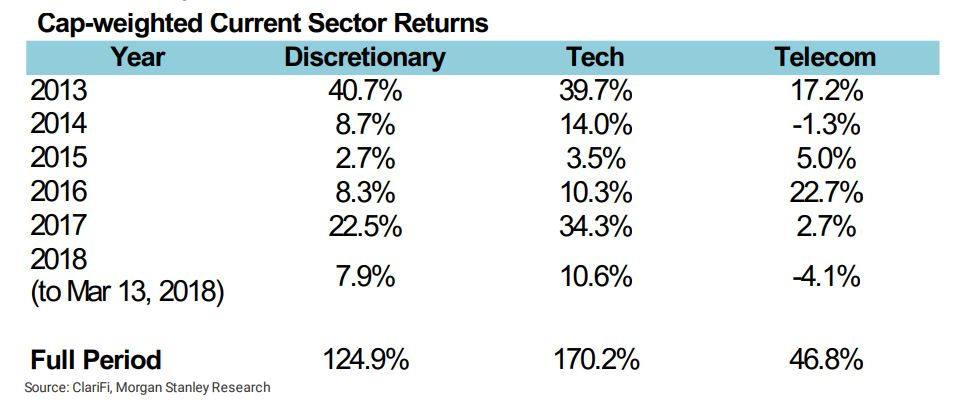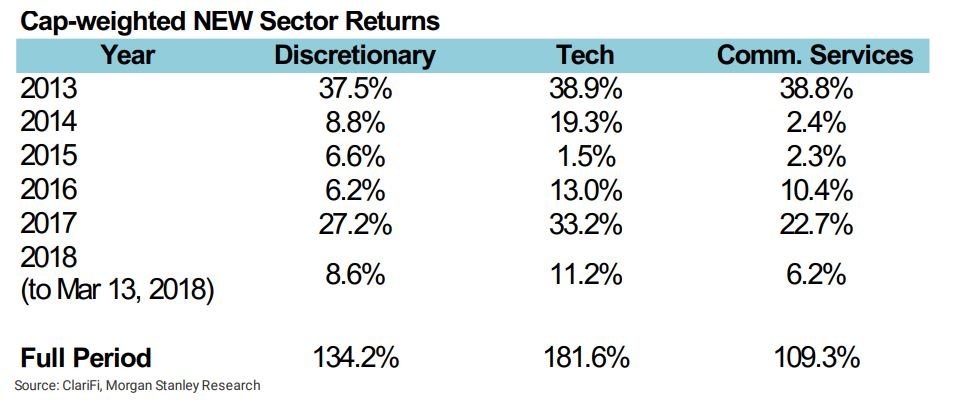– The S&P communications sector will debut later this year –
By Ryan Vlastelica, MarketWatch [1]
For the U.S. stock-market investors who prefer to hold individual market sectors rather than equities broadly, a coming change to market structure would have come in handy over the past five years.
Wall Street is looking ahead to a new S&P 500 sector dedicated to communication-related companies, which is slated to debut later this year. The sector will replace the telecommunications services group, and be comprised of stocks that are currently classified in the telecom, technology, and consumer-discretionary groups. A change like this is seen as "unprecedented" in scope, and could affect more than $60 billion in exchange-traded funds assets.
According to data from Morgan Stanley, the new sector will be the third-largest based on market value, comprising 13.2% of the S&P 500's total.
It will only have 60 components, making it the eighth-largest by this metric. However, those components will include some of the biggest stocks on the market. Walt Disney Co. Netflix Inc. and Comcast Corp.- a trio of stocks that have a combined market capitalization of more than $450 billion-will all move from the consumer-discretionary sector to the new communications group, which will cover two primary subindustries of telecom services and media and entertainment. Facebook Inc. and Google-parent Alphabet Inc. -combined market cap: $1.3 trillion-are among the technology stocks moving over.
The new sector is an attempt to better reflect the primary business of different companies, which often span multiple sector categories and don't always reflect the industry they're currently classified in. Netflix, one of the most notable internet companies of the current era, is a discretionary name, not a technology one. And when it comes to sector-based funds, telecommunication stocks like AT&T and Verizon are classified in the technology sector.
The change won't affect holders of broad-market stock funds, rather than sector-based ones, but the market participants who do choose to play individual industry groups will likely which this change had been made years ago.
According to Morgan Stanley, had this sector been created in 2013, all three primary sectors-tech, consumer discretionary, and telecom/communications-would have seen stronger performance under the new categorization structure. The following chart shows the historical performance of the three as they currently stand.
This table shows the calculated performance of the three based on the coming classification system.
The price appreciation of the discretionary sector swelled to 134.2% over the period from 124.9%, while tech jumped to 181.6% growth since the start of 2013, compared with 170.2%. By far the biggest impact was seen in the old telecom sector, where a 46.8% gain over the five-year-plus period more than doubled, jumping to 109.3%.
That jump is largely thanks to traditional telecom-a defensive sector that has mostly lagged over the past five years, a period when high-growth stocks outperformed-getting bundled in with momentum favorites like Netflix, Facebook, and Google.
From MarketWatch [1]


